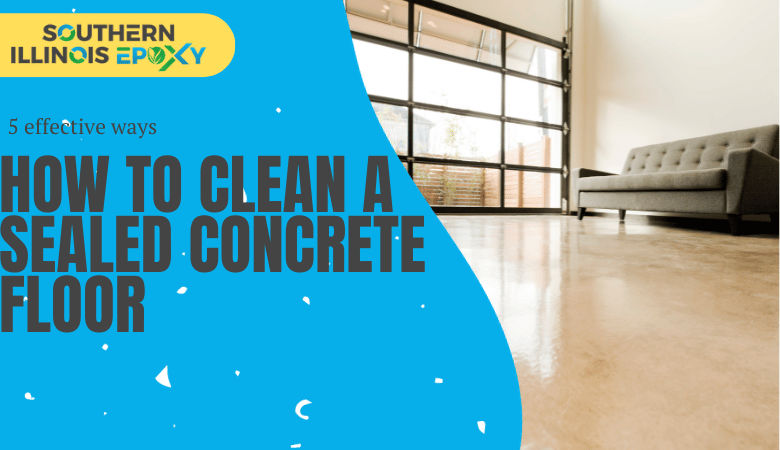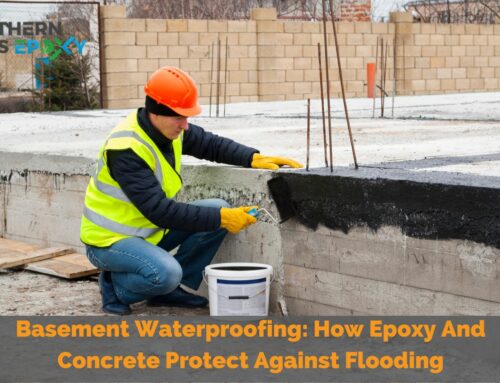A clean and well-maintained sealed concrete floor is not only visually appealing but also essential for its longevity and overall functionality. One of the key benefits of regular cleaning is the prolonged lifespan of your sealed concrete floor. Over time, dirt, dust, and debris can accumulate on the surface, leading to abrasions and scratches.
By diligently removing these particles through consistent cleaning practices, you prevent them from wearing down the sealant and compromising the structural integrity of the floor. This proactive approach helps to extend the lifespan of your sealed concrete floor, saving you from costly repairs or replacements down the line.
If you’re looking to learn how to care for your sealed concrete floor material, then this article is for you. Here, we will discuss how you can minimize the presence of contaminants and promote a healthier living by incorporating effective cleaning techniques on your sealed concrete basement floor.
Techniques for cleaning sealed concrete floors effectively
There are several techniques you can employ to clean a sealed concrete floor effectively. Below are some of the recommended ones:
Step 1: Sweeping or Vacuuming
Before starting the cleaning process, it’s essential to remove loose dirt, dust, and debris from the surface. Sweeping or vacuuming the floor helps eliminate these particles, preventing them from scratching or damaging the sealant. Use a broom with soft bristles or a vacuum cleaner with a brush attachment to effectively remove the loose debris.
Step 2: pH-Neutral Cleaner
When it comes to cleaning a sealed concrete floor, using a pH-neutral cleaner is crucial. pH-neutral cleaners are specifically designed to be gentle on the sealant while effectively breaking down dirt, grease, and stains. They ensure thorough cleaning without causing any discoloration or damage. Dilute the cleaner according to the manufacturer’s instructions and apply it to the floor for effective cleaning.
Step 3: Soft Bristle Brush or Mop
To scrub the sealed concrete floor without causing scratches or damage, it’s recommended to use a soft bristle brush or a microfiber mop. These tools are gentle enough to clean the surface effectively without compromising the integrity of the sealant. Use circular motions to scrub the floor, paying extra attention to high-traffic areas or stubborn stains. This method ensures thorough cleaning without excessive abrasion.
Step 4: Warm Water Rinse
After cleaning the sealed concrete floor with a pH-neutral cleaner, it’s important to rinse away any residue. Use warm water and a clean mop or sponge for the rinsing process. The warm water helps to remove any remaining cleaner and ensures a residue-free surface. Be cautious not to use excessive water, as it can seep into the concrete and potentially damage the sealant.
Step 5: Drying
Once the cleaning and rinsing process is complete, allow the sealed concrete floor to dry thoroughly. Air drying is usually sufficient, but you can expedite the process by using fans or opening windows to promote airflow. It’s crucial to ensure the floor is completely dry before walking on it to prevent slips and avoid leaving footprints.
Why can’t I use plain water to clean a sealed concrete floor?
Using plain water alone to clean a sealed concrete floor may not be sufficient for effective cleaning. Here’s why:
1. Inadequate Cleaning Power
Plain water lacks the necessary cleaning agents to break down and remove dirt, stains, or grime that may have accumulated on the surface of a sealed concrete floor. While water can help in removing some loose debris, it may not be effective in tackling tougher stains or deeply embedded dirt.
2. pH Imbalance
Sealed concrete floors require special care to maintain the integrity of the sealant. Using plain water may disrupt the pH balance of the floor, potentially causing damage to the sealant. The alkaline or acidic nature of certain stains or substances can require a pH-neutral cleaner to effectively break them down without compromising the sealant.
3. Residue Build-Up
When plain water is used for cleaning, it often leaves behind residue on the sealed concrete floor. This residue can be a result of minerals present in the water or any dissolved dirt that was not effectively removed. Over time, this residue can accumulate and create a dull or hazy appearance on the floor’s surface.
4. Insufficient Cleaning
Sealed concrete floors are often subjected to heavy foot traffic or exposure to spills and stains. Using plain water alone may not provide a thorough cleaning, leaving behind dirt, grime, or stains that can mar the appearance of the floor. A pH-neutral cleaner is specifically formulated to break down and remove these contaminants, ensuring a more effective cleaning result.
Final Thoughts
Overall, regular cleaning is crucial for maintaining a sealed concrete floor’s longevity and appearance. Using a pH-neutral cleaner is essential as plain water is insufficient for effective cleaning. By following proper techniques, such as sweeping, using a pH-neutral cleaner, and gentle scrubbing with a soft-bristle brush, you can keep your floor looking pristine. Remember, investing time and effort in regular cleaning will not only extend the lifespan of your sealed concrete floor but also enhance its visual appeal.




